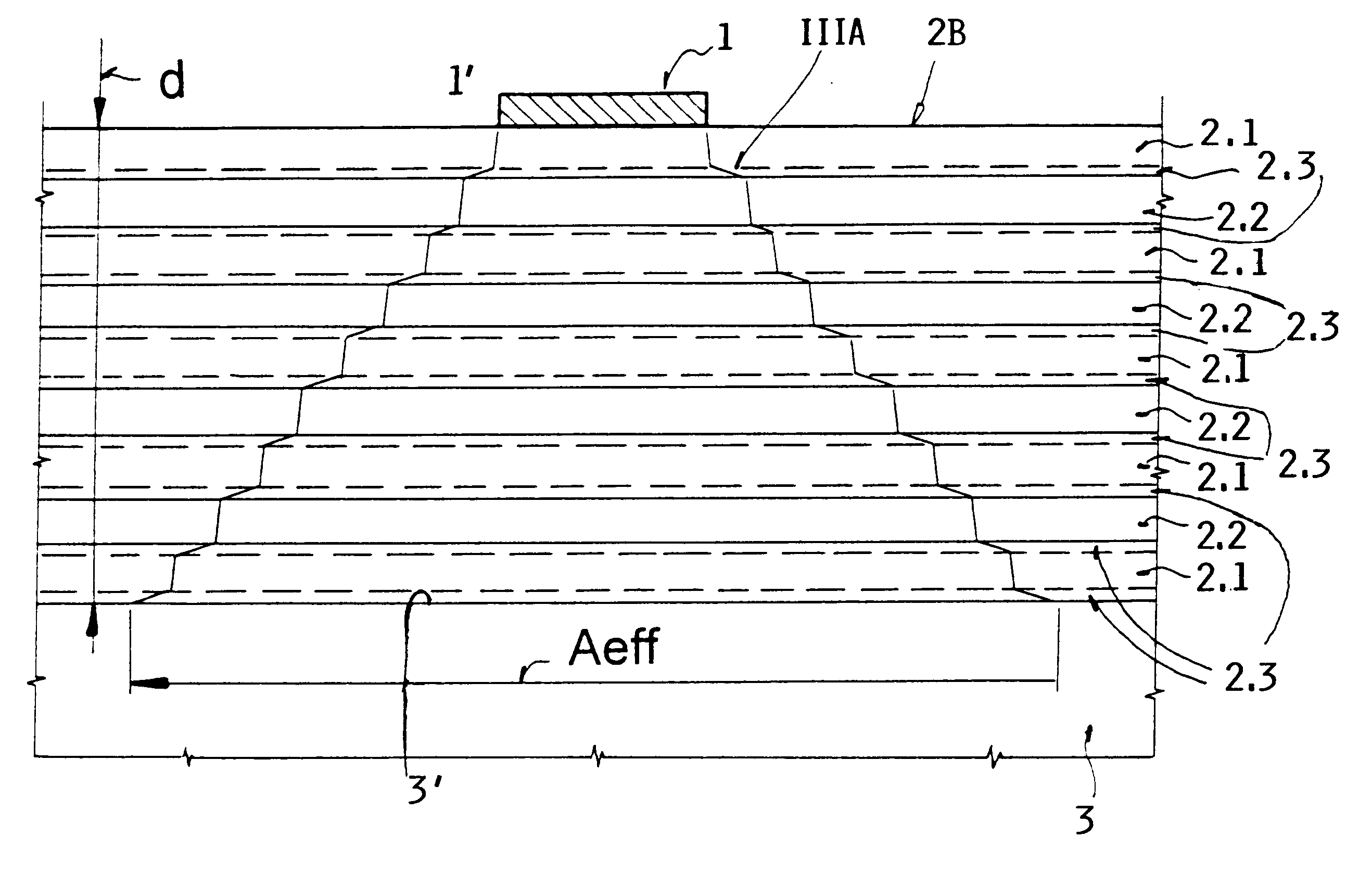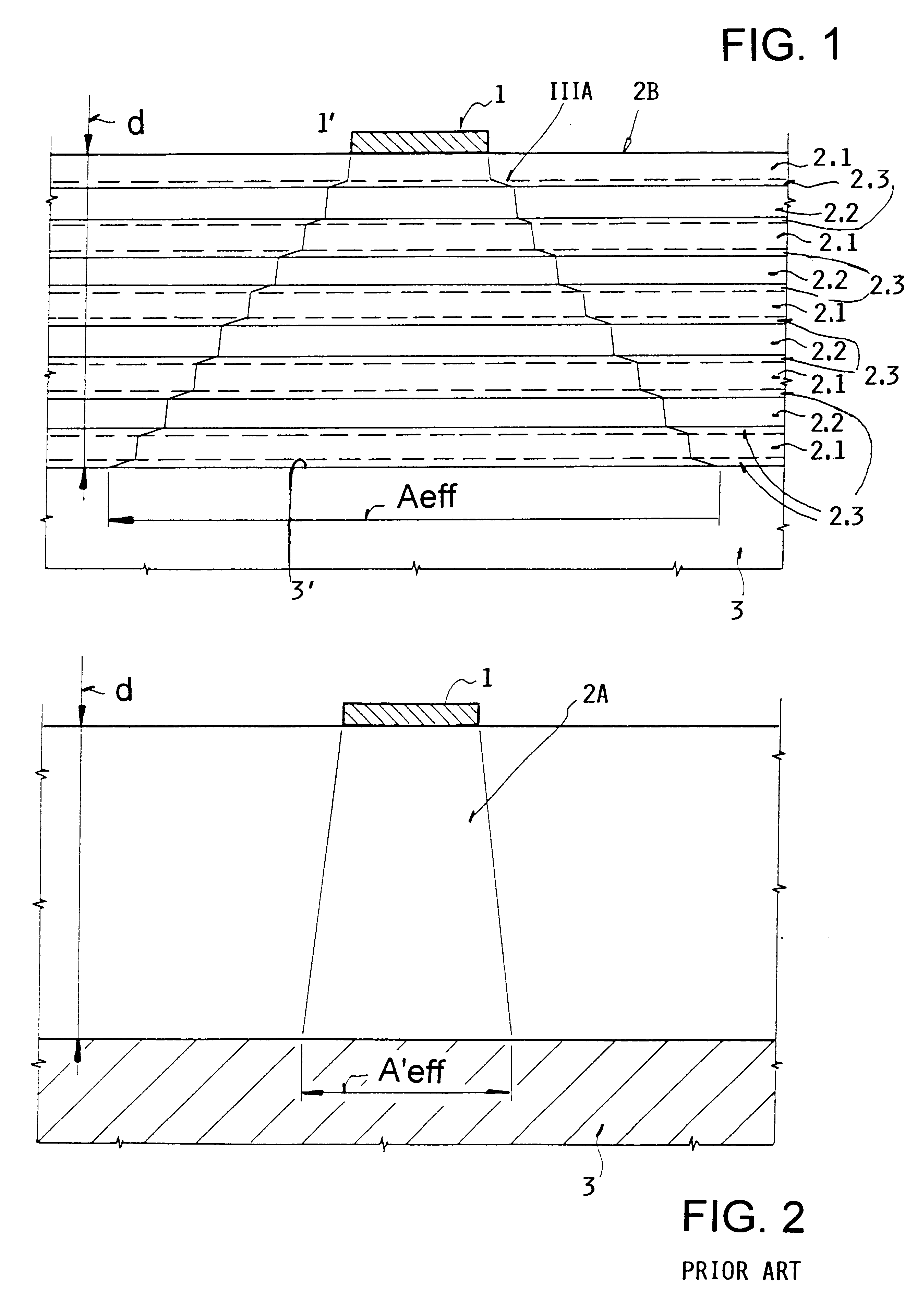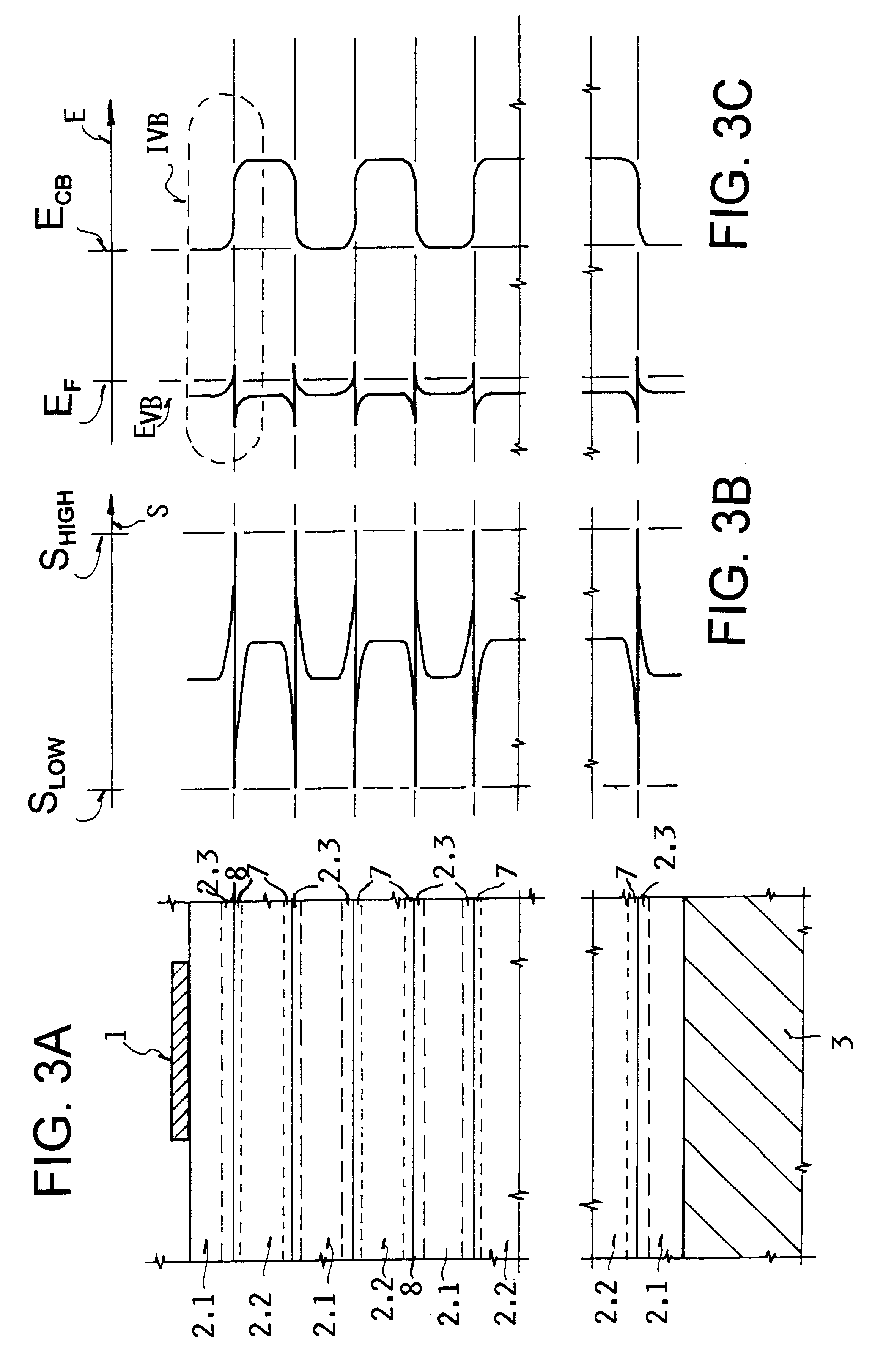Layered semiconductor structure for lateral current spreading, and light emitting diode including such a current spreading structure
a technology of lateral current spreading and semiconductor structure, which is applied in the direction of semiconductor devices, basic electric elements, electric devices, etc., can solve the problems of high material consumption for forming the window layer, and affecting the efficiency of the semiconductor devi
- Summary
- Abstract
- Description
- Claims
- Application Information
AI Technical Summary
Problems solved by technology
Method used
Image
Examples
Embodiment Construction
FIG. 1 shows the step-wise lateral current spreading effect in a heterostructure 2B comprising a sequence or stack of semiconductor layers forming heterojunctions 8 therebetween, arranged between the electrode surface 1' of an electrode or contact 1 and an active region surface 3' of an active region 3. The effective area of the active region surface 3' through which current flows is indicated in a simplified one-dimensional manner by the width A.sub.eff, whereby it should naturally be understood that the current spreading effect in the three-dimensional space of the heterostructure 2B actually expands outwardly in a quasi-pyramid shaped manner from the electrode surface 1' of the contact 1 to the surface 3' of the active region 3.
The heterostructure 2B comprises a sequence or stack of alternating individual semiconductor layers 2.1 and 2.2 having respective different band gaps, which is achieved by making the respective layers 2.1 and 2.2 of different semiconductor materials or dif...
PUM
 Login to View More
Login to View More Abstract
Description
Claims
Application Information
 Login to View More
Login to View More - R&D
- Intellectual Property
- Life Sciences
- Materials
- Tech Scout
- Unparalleled Data Quality
- Higher Quality Content
- 60% Fewer Hallucinations
Browse by: Latest US Patents, China's latest patents, Technical Efficacy Thesaurus, Application Domain, Technology Topic, Popular Technical Reports.
© 2025 PatSnap. All rights reserved.Legal|Privacy policy|Modern Slavery Act Transparency Statement|Sitemap|About US| Contact US: help@patsnap.com



